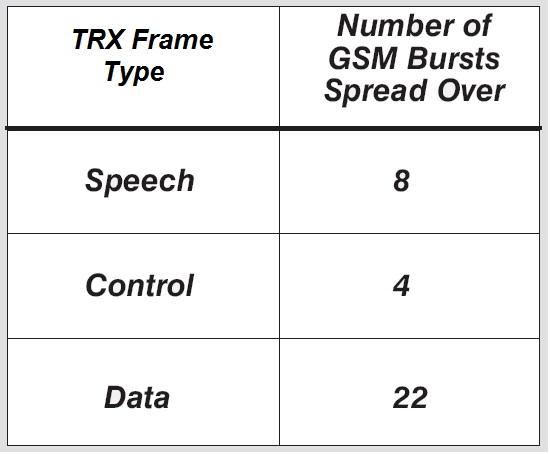Interleaving is simply encode logical channel for error protection and security. Lets understand how interleaving works in GSM.
Having encoded, or error protected the logical channel, the next step is to build its bit stream into bursts that can then be transmitted within the TDMA frame structure. It is at this stage that the process of interleaving is carried out. Interleaving spreads the content of one traffic block across several TDMA timeslots.
The following interleaving depths are used:
Speech – 8 blocks
Control – 4 blocks
Data – 22 blocks
This process is an important one, for it safeguards the data in the harsh air interface radio environment. Because of interference, noise, or physical interruption of the radio path, bursts may be destroyed or corrupted as they travel between MS and BTS, a figure of 10–20% is quite normal.
The purpose of interleaving is to ensure that only some of the data from each traffic block is contained within each burst. By this means, when a burst is not correctly received, the loss does not affect overall transmission quality because the error correction techniques are able to interpolate for the missing data. If the system worked by simply having one traffic block per burst, then it would be unable to do this and transmission quality would suffer.
It is interleaving that is largely responsible for the robustness of the GSM air interface, enabling it to withstand significant noise and interference and maintain the quality of service presented to the subscriber.

There are two types of Interleaving in GSM Diagonal Interleaving andRectangular Interleaving. From Which Diagonal Interleaving used in Speech interleaving and Data interleaving and Rectangular Interleaving used for Control Interleaving.
